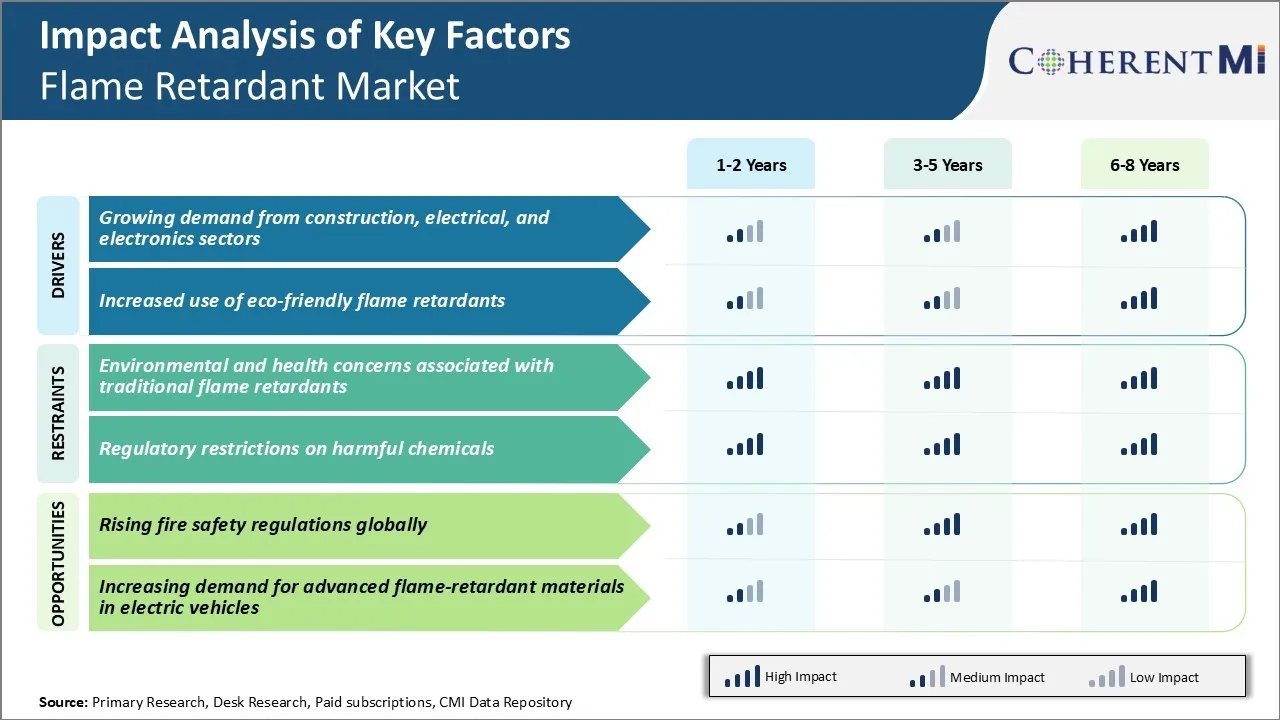Flame Retardant Market Trends
Market Driver - Growing Demand from Construction, Electrical, and Electronics Sectors
Flame retardant market has been experiencing steady growth mainly driven by increasing demand from various end-use industries such as construction, electrical, and electronics. The building and construction sector accounts for a major share of the overall flame retardant market. Strict fire safety regulations worldwide concerning residential and commercial buildings have increased the adoption of flame retardants. With rapid urbanization driving more real estate development projects, the need for flame retardants is projected to increase substantially going forward.
Additionally, the electrical and electronics industry has emerged as a key end-user for flame retardants in recent times. Surging demand for consumer electronics has boosted the production of printed circuit boards, plastics, wires & cables and other components. Since these components can catch fire easily, incorporating flame retardants becomes crucial to ensure safety.
Furthermore, the growing penetration of smart homes and electric vehicles is opening new avenues for flame retardant manufacturers. Advancing technologies are enabling higher integration of electronic control systems in automobiles as well as homes which require effective flame protection. This will bolster growth of the flame retardant market in the coming years.
Market Driver - Increased Use of Eco-friendly Flame Retardants
With growing environmental consciousness, flame retardant producers are increasingly focusing on developing sustainable and eco-friendly product varieties. Stringent regulatory push for non-halogenated and less toxic material alternatives is a key factor driving this change. Regulations such as REACH are also promoting a shift towards phosphorus-based alternatives to halogens.
Another sustainable technology gaining ground is that of intumescent coatings. Made from environmental-friendly substances, these coatings swell into an insulating charred layer when exposed to heat or flame helping surfaces withstand fire for a longer duration. Their barrier properties minimize smoke and toxic emissions during combustion. Intumescent are suitable for a variety of substrates from wood, composites to metallic and are finding increased adoption in construction, transports and industrial applications.
Overall, the rising ecological priorities coupled with new stringent rules will accelerate the utilization of next-gen bio-based and non-halogen solutions. This will support the global flame retardant market in the coming years.

Market Challenge - Environmental and Health Concerns Associated with Traditional Flame Retardants
One of the key challenges faced by the flame retardant market is the environmental and health concerns associated with traditionally used flame retardant chemicals. Several flame retardants such as polybrominated diphenyl ethers (PBDEs) and chlorinated tris phosphate (TDCP) are now banned or being phased out due to evidence of their persistence in the environment and potential impacts on human health.
PBDEs, which were commonly used as additive flame retardants, are known endocrine disruptors and neurotoxicants. Their uncontrolled use has led to wide contamination of the environment as well as accumulation in human and animal tissues. Similarly, TDCP is a known carcinogen and its use has been restricted in many countries. This may create major challenges for growth of players in the flame retardant market.
Market Opportunity - Rising Fire Safety Regulations Globally
The growing fire safety regulations across major industries such as construction, transportation, consumer electronics etc. presents a significant opportunity for the flame retardant market. Stringent regulations such as UL 94, IMO, and various national and international building codes have made flame retardant inclusion mandatory in numerous materials and components. This is driving the demand for innovative and environment-friendly flame retardant solutions.
Especially in developing countries, growing investments in infrastructure, rapid urbanization and rising disposable income are propelling the need for fire safe homes, offices and public buildings. Similarly, stringent norms by FDA and EUROPA for flame retardant content in children's items and upholstery are opening up avenues for alternative green chemistries. This will eventually create lucrative opportunities in the flame retardant market.